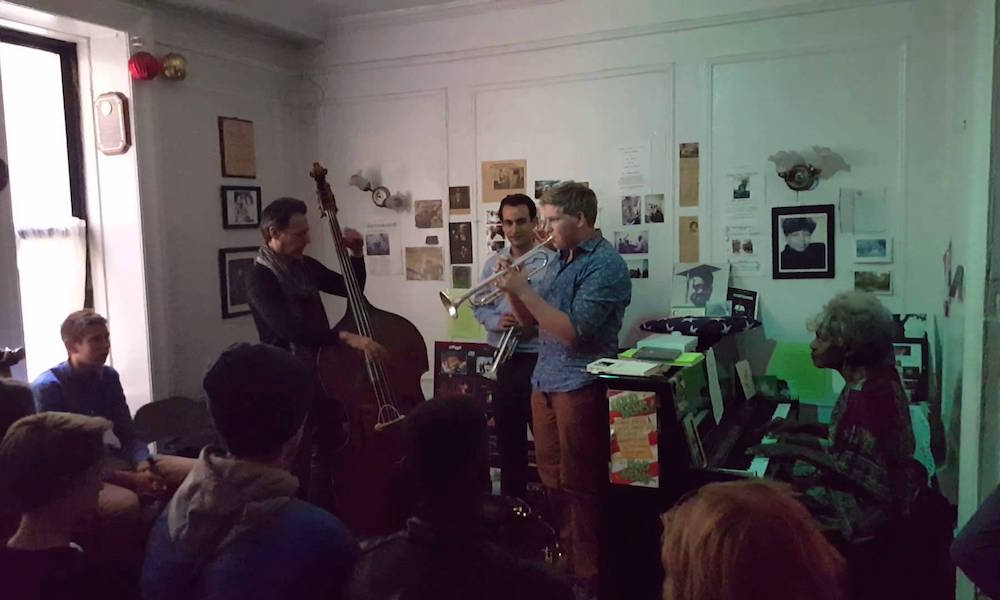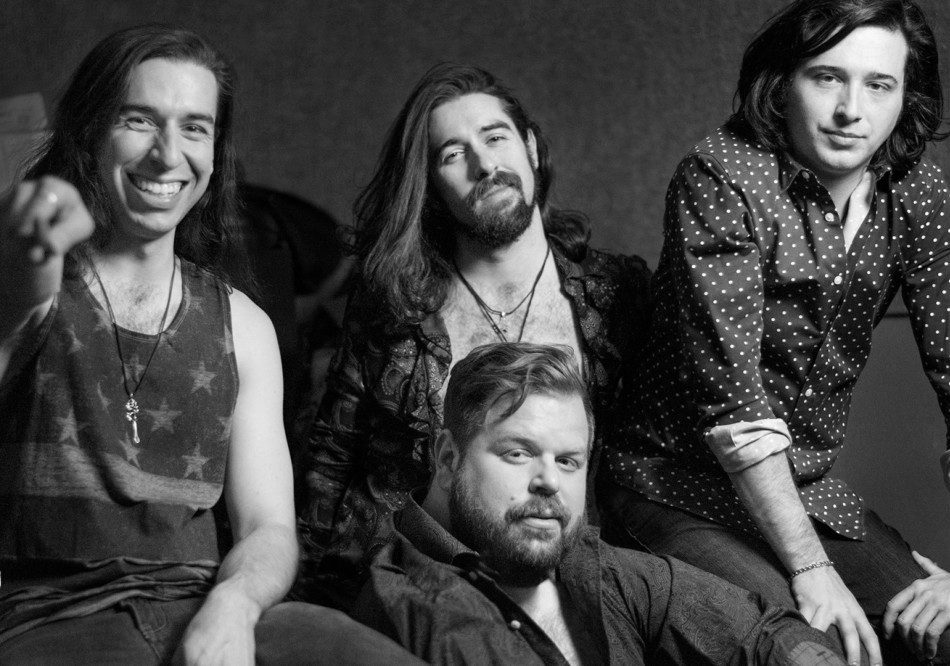ONLY NOISE: Marjorie’s

On Sunday, in a part of town I rarely get to visit, I sat on a hard wooden bench staring at a wall. From beyond that wall I could hear trumpet, bass, and a drum kit played by invisible musicians. Their presence was confirmed not only by the sound, but by the rows of people sitting in fold up chairs in front of me, who had a better view of the action. The only musician I could see was an elderly woman in a close-cut purple sheath dress, hunched over a piano. She sat framed by a doorway, and if I craned my head to the right, the discomfort in my neck was worth what I could see.
The woman in the purple dress was Marjorie Eliot, and she was playing in the Harlem apartment she’s lived in for 36 years. For 25 of those years, Eliot has hosted a weekly Sunday afternoon jazz concert in her parlor, free of charge and open to whoever can get there on time. This magnitude of kindness is unusual coming from anybody, but especially someone like Marjorie Eliot, who has endured more tragedy than most – even for a decades-long New Yorker. The concerts began as a way for her to ease the pain of losing her son Phil to kidney failure; fourteen years later she lost another son, Michael, to meningitis. Another son briefly went missing in 2011 – Shaun Eliot, who suffers from an undisclosed mental illness, boarded a bus en route to a transition house on Wards Island and wasn’t heard from for over a month, when a nurse at Metropolitan Hospital finally identified him and let Marjorie know he was safe.
I learned about Marjorie Eliot’s personal tragedies days after I left her home at 555 Edgecombe Avenue in Harlem. But I was already well aware of the events’ popularity, however. When my roommate brought me and a couple of friends to Harlem for Marjorie’s March 11th performance, he was somehow under the impression that her cover of obscurity had only recently been blown (isn’t it just like a white man to think they are the first to notice something special?). The fact of the matter is, The New York Times wrote about Marjorie’s in 1996, and NPR in 2006. Marjorie’s weekly shindig has pages on Yelp, My Secret NY, Facebook, and Place Matters. The cat is, as they say, “out of the bag,” and has been for quite a while. And that’s okay.
One of the most remarkable things about Marjorie’s was how gorgeous and unspoiled it was by the sheer volume of people in attendance. The apartment was packed like a sardine can. There were people crammed into the kitchen, peeking out from behind the doorjamb. Several rows of metal folding chairs held folks with far better views than mine, but this was the shared fruit of their punctuality. The sturdy wooden pew I perched on seemed to extend all the way down the hall, where more people simultaneously watched the band and waited to pee. And in the last grasp for a place to listen and maybe look, a string of guests lined the doorway and wrapped around into the outside hall, waiting for people to give up their seats. It was one of the few times in life I felt that the old saying, “the more, the merrier” actually applied. I occasionally wondered if the apartment was at capacity, or if Marjorie ever got hassled by the fire department, but not knowing only enhanced the experience – like there was some grain of mischief in music again.
Because Marjorie enlists a rotating cast of musicians on Sundays, the music is nonstop. She relinquishes the piano to a man in a fedora, so she can host and greet friends. Trumpet and sax players emerge from the parlor to rest, and beyond the wall another set of woodwinds and brass picks up. Most songs are instrumental, but Marjorie and a few male vocalists pepper in gospel and jazz standards here and there. I feel fortunate that these songs are rare, as it becomes increasingly difficult not to cry during them. For those of us who don’t do church, this is about as close as we get to seeing God.
Marjorie’s Parlor Jazz presented not only one of the most transcendent experiences I’ve had in my nine New York years, it was also one of the most wholesome, which is probably why the comparison to church springs up (not to mention the Lord-forward lyrics Marjorie sang). It felt so inexplicably wonderful to sit quietly for over an hour, not only not touching my phone, but witnessing dozens of phone-free people marveling at this exquisite music we were hearing, free of charge.
When I was in Paris last summer, my French friends and I ended up at a house party. Sadly, I can’t tell you which arrondissement we were in. By then I had imbibed two beers spiked with some kind of diabolical walnut liqueur, and all I remember is being invited to the party on the street. On the street is how most things begin in Paris, in my experience. Once inside the party, my friend told me that it was “nice luck” that we got invited, as seeing the inside of a Parisian’s apartment is a very rare thing. This moment rushed back to me as I sat in Marjorie’s home. It is just as special to see the inside of a New Yorker’s abode, given the premium put on personal space and privacy in this bustling burg.
While the Parisian soiree was fueled by cheep beer and menthol cigarettes, I was just as thrilled at Marjorie’s party favors. About an hour into my stay, an impeccably dressed woman in her 70s came around with a tray full of granola bars, and later one lined with Dixie cups of orange juice. In a city where the best stories are usually born in the wee drunken hours, it felt good to sit in an old woman’s home, drinking OJ in the middle of the day, accepting the enormous gift she gives the city, every week.




